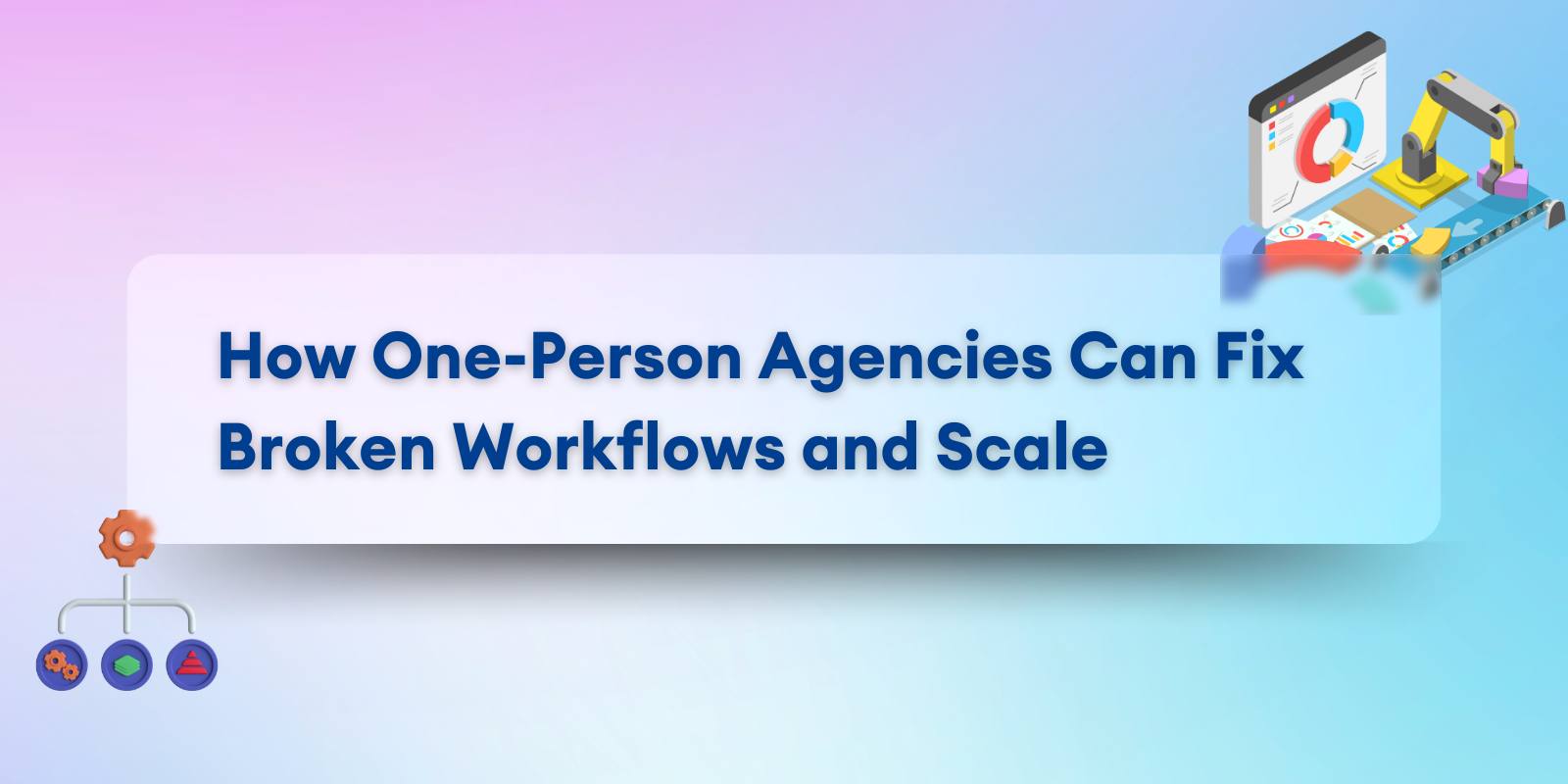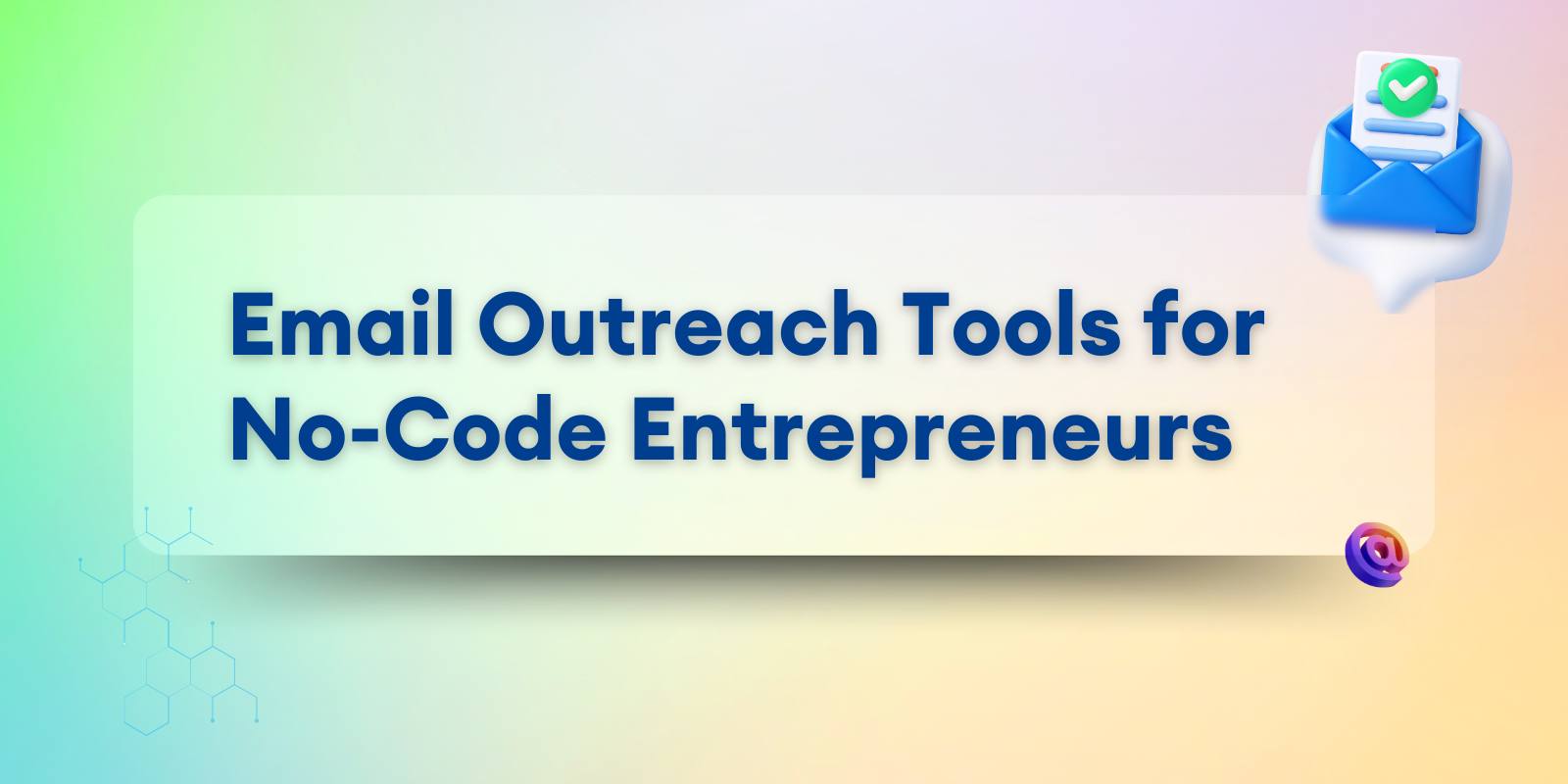
You didn’t start your agency to spend your nights chasing unpaid invoices, resending Google Drive links, or wondering if you actually sent that onboarding form. But here you are, doing everything, managing everything, dropping balls anyway.
There’s no project manager. No account lead. No ops person smoothing things out behind the scenes.
Just you.
And every day that backend mess stays messy, your business stays stuck. It’s not a work ethic issue. It’s a workflow issue. And it’s probably costing you more than you think.
This is the part nobody tells you about running a one-person agency. You don’t need more clients. You need better systems.
What Chaos Looks Like Day-to-Day
The problem isn’t that you’re disorganized. It’s that your entire business is duct-taped together.
You’re onboarding clients manually through back-and-forth emails.
You’re managing deliverables across too many tools like Airtable, Slack, email, Notion, etc… while still texting yourself reminders so you don’t forget anything.
You’re rewriting the same messages over and over because there’s no system in place to templatize them.
You’re doing late-night admin work just to keep the wheels from falling off.
You’re not building a business. You’re fighting fires. Every. Single. Day.
And while it might feel normal, this kind of chaos adds friction to everything you do. It slows down delivery. It frustrates your clients. And it makes your business feel way harder than it needs to be.
Why Chaos Doesn’t Scale
The messy backend you’re tolerating now? It won’t tolerate growth.
When a new client comes in, it doesn’t feel exciting. It feels like a logistical threat. More calls to schedule, more tasks to track, more loose ends to manage with the same fragile setup.
You can’t raise your rates confidently because your client experience is inconsistent. You can’t hand off anything because everything lives in your brain. And you definitely can’t scale, because the more you grow, the messier it gets.
Eventually, that bottleneck becomes your business.
Here’s the good news: the fix isn’t about hiring a team or investing in some expensive all-in-one system. It’s about learning to operate like the most efficient service businesses do, whether you’re in the field or fully online.
And it starts with looking at how they do it.
What One-Person Agencies Can Learn from Field Ops
You might think running a one-person agency has nothing in common with managing a team of technicians in the field. But the truth is, both depend on the same foundation: systems that keep chaos out.
Field service companies can’t afford to wing it.
If one technician misses a job, the whole schedule collapses.
If a client request slips through the cracks, it costs them real money.
If communication breaks down, the customer experience suffers.
Sound familiar? It should. Because those same operational cracks appear in your business too, just with different job titles.
Field Service Businesses Are Ops-First by Necessity
Plumbers, HVAC pros, electricians, etc… they’ve already solved the problem you’re still wrestling with: how to keep client work moving without constant firefighting.
They track every job from scheduling to completion in one system.
They know exactly who’s doing what, where, and when.
Clients get real-time updates instead of chasing for information.
Invoices go out automatically. Workflows move forward without waiting on anyone’s memory.
It’s not glamorous. It’s just organized.
And that’s what most one-person agencies are missing: operational visibility. The ability to see what’s happening across every project in one glance. That clarity doesn’t just save time; it prevents burnout.
Field service businesses don’t survive without tight operations. Solo agencies don’t scale without them.
Universal Principles That Apply to Any Service Business
Whether you’re fixing air conditioners or building websites, the rules of smooth operations are the same.
- Centralize everything. Clients, tasks, and timelines belong in one place.
- Standardize your workflow so each client experience feels consistent.
- Build repeatable steps for every recurring task. No more starting from scratch.
- Track work like a system, not a to-do list.
- Automate simple admin tasks before they become bottlenecks.
Field service pros have mastered these fundamentals with software built to manage complex, moving parts.
For example, there are tools designed to handle exactly this kind of workflow, making it effortless to manage scheduling, client communication, and operations in one place. Understanding how to streamline your field operations gives you a blueprint for running your own service-based business more smoothly, whether your “field” is a client’s office or your laptop.
That’s the mindset shift: stop thinking like a freelancer juggling projects. Start thinking like an operator running a real business.
Signs Your Agency Needs Better Workflow Systems
Running a lean agency means wearing every hat; strategist, account manager, ops lead, even finance. That’s fine when you have two clients. But once your client list grows, your systems need to grow with it.
If your backend still runs on memory, manual steps, and scattered tools, you’re not just inefficient, you’re limiting how far your business can go.
Here are the clearest signs your operations are holding you back.
Your Business Feels Custom Every Time
Every new client feels like starting from scratch.
You scramble to find old proposal templates, recreate onboarding forms, and rewrite the same kickoff emails.
There’s no repeatable process. Each client gets a slightly different experience because there’s no single, documented way of doing things.
You’re not inefficient because you’re careless, you’re inefficient because you’re reinventing the wheel for every project.
The result? Inconsistent delivery, longer turnaround times, and a business that feels heavier than it should.
If you’re constantly improvising, you’re not streamlining. You’re surviving.
You’re the Single Point of Failure
If you disappeared for a week, would your business keep moving?
For most solo founders, the honest answer is no.
Every task, every follow-up, every bit of client knowledge lives in your head.
That setup might work when you have one or two clients, but it quickly becomes a liability.
You can’t take time off, and scaling feels impossible because nothing can run without you.
A real system isn’t just about saving time, it’s about making your business resilient.
When the entire operation depends on you remembering everything, you’re not running a company. You’re running on fumes.
The Hidden Cost of Staying Disorganized
Disorganization doesn’t just waste time. It eats profit.
Every missed follow-up means lost revenue.
Every miscommunication means rework or scope creep.
Every hour spent searching for files means one less hour serving clients or finding new ones.
Over time, this chaos compounds. It costs referrals, retention, and reputation.
When clients feel like your process is messy, they stop trusting your professionalism, even if your work is brilliant.
The most successful one-person agencies aren’t the ones doing the most. They’re the ones with the cleanest, simplest systems behind the scenes.
How to Streamline Your Client Workflow Step by Step
When I first started my one-person agency, my operations were a mess. I had no system, no process, and no real structure. My “workflow” was a mix of memory, post-it notes, and browser tabs.
If a client asked for a file, I would dig through Slack, email, and Google Drive, hoping to find it before the awkward silence grew too long.
It wasn’t that I didn’t care about efficiency. I simply didn’t have a framework for it.
The moment I built simple systems, everything changed. Clients stopped chasing me. Deadlines stopped slipping. I finally had the mental space to focus on what mattered most: great work and growth.
If your agency constantly feels like a juggling act, this is where you start to fix it.
Step 1: Standardize Your Client Journey
Your biggest time drain isn’t delivery. It’s setup. The repetitive, behind-the-scenes tasks: sending proposals, confirming timelines, collecting assets, and writing the same onboarding messages again and again.
Start by outlining every step in your client journey, from first contact to final handoff. Write it out. Then identify the actions that happen every single time.
That is what you standardize.
Turn your proposal, contract, and onboarding emails into templates. Create one form that collects everything you need before you start a project. Draft a welcome guide that explains your process, communication hours, and what clients can expect.
You can store it all in Notion, ClickUp, or Google Drive. The tool doesn’t matter as long as it’s accessible and consistent.
This gives your work structure, makes your client experience predictable, and frees your brain from remembering steps that should be automatic.
Step 2: Centralize Tasks and Communication
Every time you jump between tools, you lose time and focus. One message in Gmail, another in WhatsApp, a third in a project board. That constant switching creates hidden chaos.
Choose one place to manage your entire workflow. Tasks, files, progress, and updates all live there.
You can use Notion, Trello, ClickUp, or even a color-coded spreadsheet. The key is discipline. Everything must go into that one system.
For each client, create a single view that shows what’s completed, what’s in progress, and what’s waiting for input. Add due dates and notes. Review it daily.
This simple structure will save you hours every week and bring instant calm to your operations. Once you see everything clearly in one place, the pressure lifts, and your day stops feeling like a game of catch-up.
Step 3: Automate the Repetitive Work
Automation isn’t about replacing yourself. It’s about protecting your time and attention.
Look for anything you do more than twice a week. That’s a candidate for automation.
Start small. Use a calendar tool like Calendly or SavvyCal for scheduling. Set up a form for onboarding so you never collect information manually again. Use one payment link or template instead of creating custom invoices each time.
If you can, connect these tools so they talk to each other. When a client books a call, they automatically receive a confirmation email and a payment reminder.
Automation doesn’t make your business robotic. It makes it run like a professional operation instead of a personal hustle.
The less time you spend on routine tasks, the more you can spend on strategy, creativity, and growth.
Step 4: Track Projects Like a Business, Not a Freelancer
Freelancers track deliverables. Businesses track projects. That difference determines whether you feel busy or in control.
Each client project should follow a clear structure that shows what’s done, what’s next, and what’s waiting on the client. Keep it simple.
Use clear statuses such as:
- In Progress
- Waiting on Client
- Ready for Review
- Completed
Review your pipeline once a week. Update statuses, adjust deadlines, and make notes on what needs attention.
If you want to keep it lightweight, create a simple dashboard with four columns: Client, Status, Next Action, and Deadline. Even that will transform how you see your workload.
You’ll know where every project stands at a glance. You’ll catch potential delays before they happen. And you’ll finally feel like your business runs on purpose, not panic.
Make Systems Your Superpower Starting This Week
If your business feels heavy, it isn’t because you lack talent or drive. It’s because too much of it still depends on you.
The best one-person agencies don’t grow by working faster or longer. They grow by building quiet, reliable systems that keep things running even when they step away.
You don’t need to overhaul your entire business to start feeling that difference.
Pick one area to fix this week.
Maybe it’s setting up a simple project tracker.
Maybe it’s automating client onboarding or creating a reusable template for your proposals.
Each small improvement adds structure.
Each bit of structure gives you space to think, to create, and to serve your clients better.
Within a few weeks, your business begins to feel lighter. Not because you found a magic app, but because you started running it with intention and clarity.
Systems aren’t boring. They are what turn a one-person operation into a professional agency.




